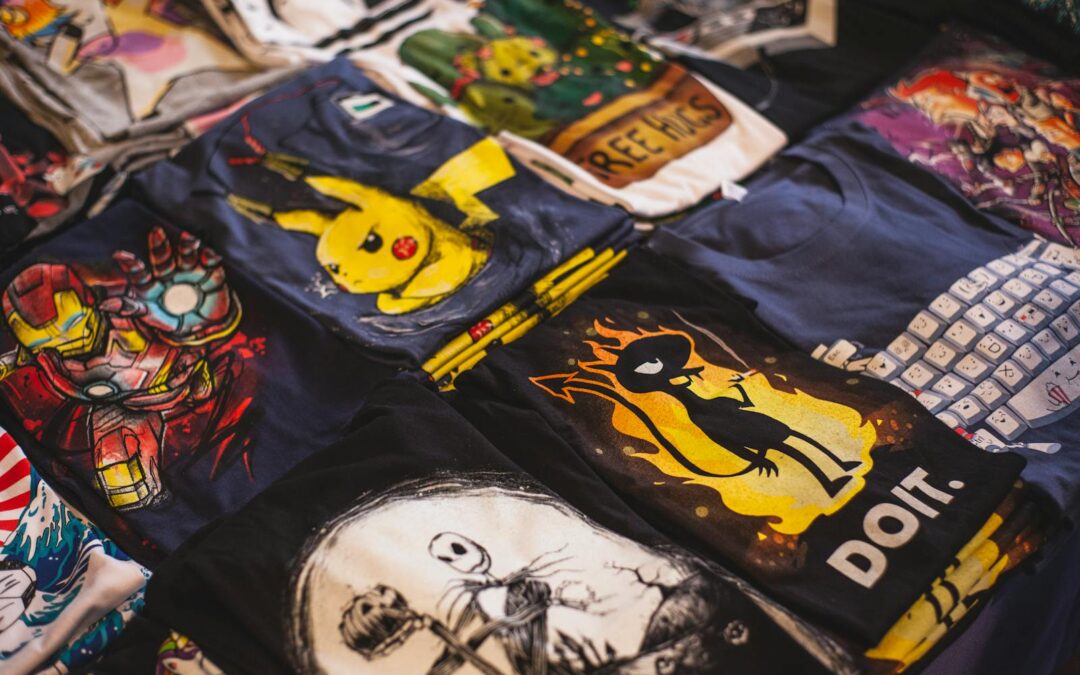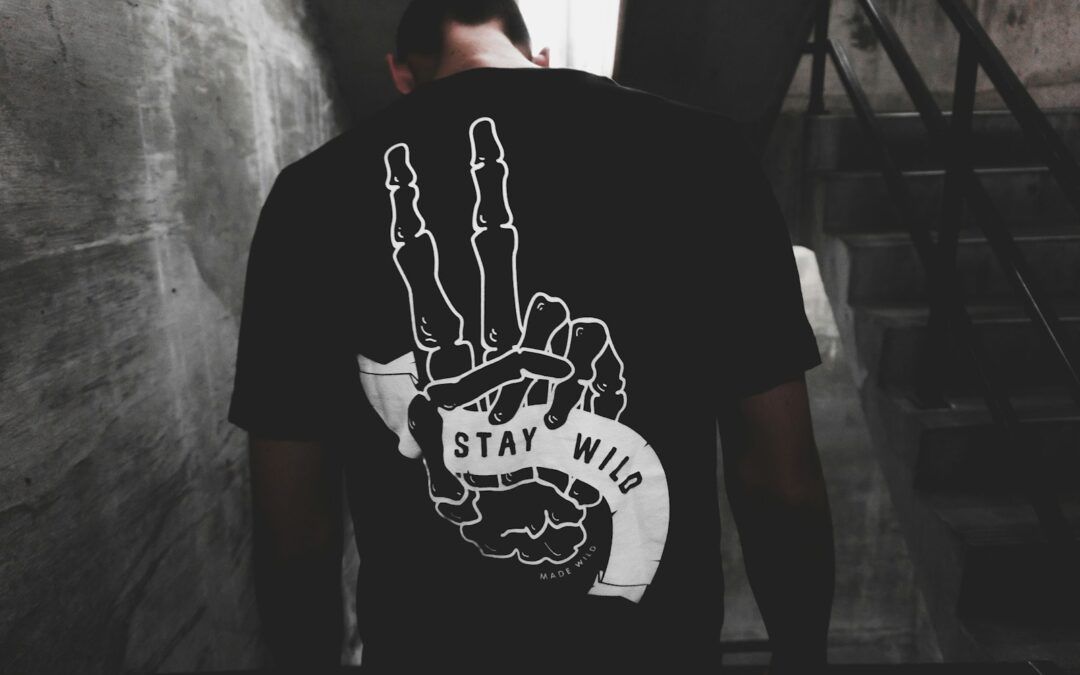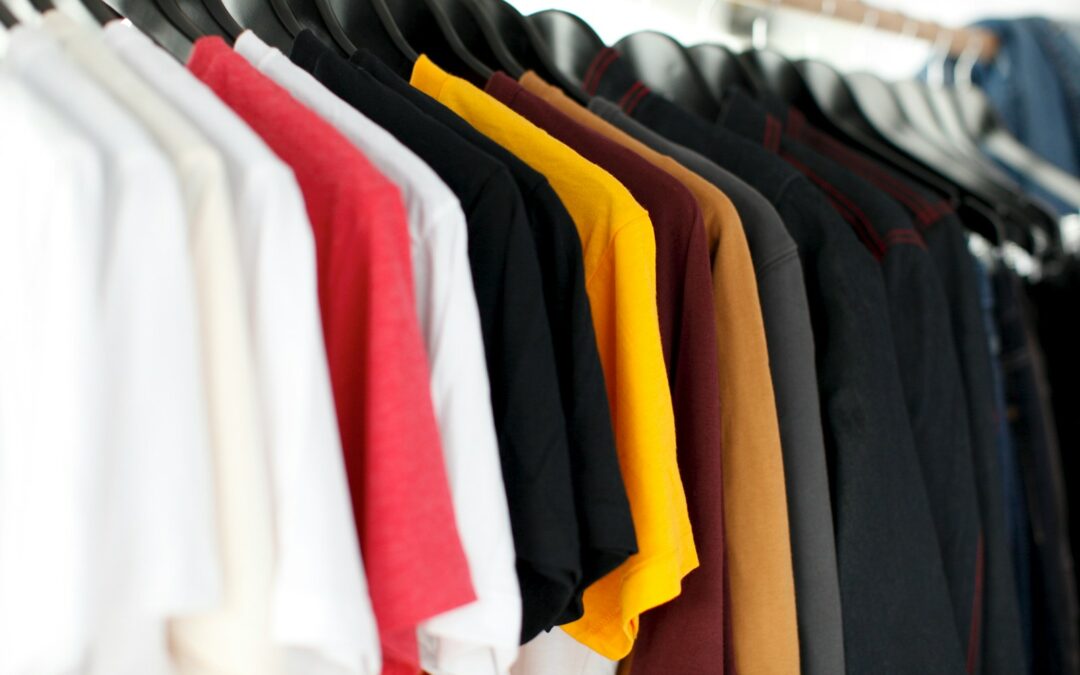Are you wondering how to make a shirt? Are you a DIY enthusiast looking to create your own custom t-shirt, starting with a basic t-shirt? Crafting your own shirt can be incredibly rewarding and allows you to showcase your unique style. Imagine wearing a T-shirt that fits you perfectly, reflects your personality, and is made by you! This blog will guide you through the entire process, from gathering materials to sewing and adding those final details.
The Allure of Creating Your Own T-Shirt Design
There’s something magical about making your own clothes. Whether you’re making a basic t-shirt or a more complex design, the process is both fun and rewarding. It’s an opportunity to express your creativity and individuality. Creating custom t-shirts has become a popular trend among DIY enthusiasts for good reason—it’s fun, sustainable, and highly personal. You’ll save money, reduce waste, and wear something truly unique.
In this guide, we’ll walk you through every step of the process, ensuring you come out with a shirt that you’ll love to wear. From picking the right materials to mastering basic sewing techniques, we’ve got you covered.
How To Make A Shirt | Materials and Tools
To get started, you’ll need a few essential materials and tools. Here’s a detailed list to make sure you’re prepared:
- Fabrics: Choose high-quality cotton or cotton-blend knit fabrics.
- Patterns: Either create your own pattern or buy one that suits your style.
- Scissors: Sharp fabric scissors for precise cutting.
- Sewing Machine: A reliable machine with straight stitch and zig-zag stitch capabilities.
- Measuring Tape: For accurate measurements.
- Pins and Needles: To hold everything in place.
- Chalk or Fabric Marker: For marking fabric.
These materials are perfect for creating a basic t-shirt from scratch.
You can source your materials from local craft stores or online retailers. Always opt for high-quality materials to ensure the best results.
How To Make A Shirt | Designing Your Shirt
Designing your t-shirt is one of the most exciting steps. Here’s how to approach it:
- Choose a Style: Decide on the type of t-shirt you want to make—basic t-shirt, fitted, oversized, etc.
- Pick Colors: Select colors that complement your wardrobe. Neutral tones are versatile, while bold colors make a statement.
- Create a Design: Use software like Adobe Illustrator or Canva to design graphics. You can also hand-draw your designs and scan them.
Think about the overall look you want to achieve. Your design could be anything from a simple logo to an intricate pattern.
How To Make A Shirt | Making the Pattern
Creating your own pattern ensures a perfect fit. Here’s a step-by-step guide:
- Measure Yourself: Take accurate measurements of your bust, waist, hips, and length from shoulder to hem.
- Draw the Pattern: Use paper and pencil to sketch the pattern pieces. Include seam allowances and any design details.
- Cut the Pattern: Carefully cut out your pattern pieces using sharp scissors.
Creating a pattern for a basic t-shirt is a great starting point for beginners.
If you’re new to pattern-making, consider modifying an existing pattern to fit your measurements.
How To Make A Shirt | Cutting the Fabric
Cutting fabric correctly is crucial for a well-made t-shirt. Follow these tips:
- Lay Out the Fabric: Ensure it’s flat and wrinkle-free.
- Pin the Pattern: Pin your pattern pieces to the fabric, aligning with the grain direction.
- Cut Precisely: Use sharp scissors to cut along the edges of your pattern.
These cutting techniques are essential for making a basic t-shirt.
Taking your time during this step will pay off with a garment that looks professional.
How To Make A Shirt | Sewing Your Shirt
Now, let’s bring everything together. Set up your sewing machine and get ready to sew:
- Thread the Machine: Load your sewing machine with matching thread.
- Practice Stitches: Test your machine on scrap fabric to adjust the tension and stitch length.
- Start with Seams: Begin by sewing the shoulder seams, then attach the sleeves, and finally sew the side seams.
These sewing steps are fundamental for constructing a basic t-shirt.
Use a straight stitch for the main seams and a zig-zag stitch for areas that need to stretch.
How To Make A Shirt | Adding Finishing Touches
Finish your t-shirt with these final details:
- Hems: Fold the bottom edge and sleeves, then sew with a straight stitch.
- Neckline: Add a neckline band or simply sew a hem.
- Pressing: Iron your seams and hems for a professional finish.
Don’t rush this step. Finishing touches make a big difference in the overall look. These finishing touches will give your basic t-shirt a polished look..

Create Your Own T-Shirts with DTF Transfers
Direct-to-film (DTF) transfers are an innovative method for adding vibrant designs to your own shirt design, enabling you to achieve professional-quality prints in the comfort of your home. This technique involves printing your design onto a special film, which is then transferred onto the fabric using heat. DTF transfers can be used to add vibrant designs to a basic t-shirt, making it unique and personalized. Here’s how to effectively create your custom shirts using DTF transfers:
Materials Needed
To get started with DTF transfers, you’ll need the following materials:
- DTF Printer: A printer specifically designed for DTF transfer printing.
- Transfer Film: Special DTF transfer film that holds the ink.
- Adhesive Powder: This is applied to the printed design to ensure proper adherence to the fabric.
- Heat Press Machine: A heat press is essential for transferring your design onto the t-shirt effectively.
- T-Shirts: Choose high-quality cotton or cotton-blend shirts for the best results.
These materials are ideal for transforming a basic t-shirt into a custom piece.
Steps to Create Your Custom Shirt
- Design Your Graphic: Use graphic design software to create your design. Remember that your design should be high resolution to ensure clarity when printed.
- Print the T-Shirt Designs: Load the transfer film into your DTF printer and print your design. Make sure to use the correct settings for film and quality to ensure the best output.
- Sprinkle Adhesive Powder: While the print is still wet, sprinkle adhesive powder over your design evenly. This will help the design stick to the fabric when heat is applied.
- Cure the Print: Place the transfer in a convection oven or heat gun to cure the adhesive powder according to the manufacturer’s instructions. This step is crucial for ensuring a durable transfer.
- Heat Press the Design: Position your print on the t-shirt and cover it with a Teflon sheet. Set your heat press to the recommended temperature and pressure for DTF transfers. Apply heat for the specified time, allowing the design to fuse with the fabric. This technique works well on a basic t-shirt, allowing for a clean and professional finish.
- Peel the Film: Once cooled, peel the transfer film away gently. Your vibrant design should now be securely affixed to the t-shirt.
Care Instructions
To maintain the quality of your DTF-printed shirts, wash them inside out in cold water and avoid bleach. Air drying is recommended to preserve the print’s vibrancy and longevity. Following these steps will allow you to create stunning, customized shirts that showcase your creativity and style with each wear. These care instructions will help maintain the quality of your basic t-shirt.
Custom Shirt Ideas
Creating custom shirts opens the door to a world of possibilities. Here are some creative ideas to inspire your next design:
- Personalized Text: Incorporate meaningful quotes, names, or dates that hold special significance. This could be for birthdays, anniversaries, or motivational messages.
- Family Reunion Shirts: Design matching shirts for family gatherings featuring a family crest, slogan, or fun graphics that represent your family’s interests or inside jokes.
- Event-Specific Designs: Create shirts for special events such as weddings, parties, or charity runs. Unique designs that capture the essence of the event can make great keepsakes.
- Seasonal Themes: Consider making shirts that reflect seasonal changes or holidays. Designs featuring autumn leaves, winter snowflakes, or summer beach vibes can be particularly appealing.
- Pet Love: Showcase your love for pets with custom designs that feature your furry friend’s name, breed, or even a cute illustration of them.
- Local Pride: Celebrate your hometown or favorite vacation spot with shirts that highlight landmarks, local customs, or unique geographical symbols.
- Hobbies and Interests: Design shirts that reflect personal passions such as music, art, travel, or sports. Use graphics, quotes, or illustrations that resonate with your favorite activities.
A basic t-shirt can be the perfect canvas for your creative ideas.
Let your creativity run wild and make a shirt that tells your unique story!
Resources for Creating Your Custom Shirts
To aid in your journey of designing and printing custom shirts, here are some valuable resources that can help you along the way:
- Graphic Design Software:
- Adobe Illustrator – A powerful tool for creating vector graphics and designs.
- Canva – An easy-to-use platform for graphic design, offering numerous templates and design elements.
- DTF Printing Equipment:
- Epson DTF Printers – A selection of printers designed for DTF transfers.
- Heat Press Machines – Browse options for heat press machines on Limitless Transfers to find one that suits your needs.
- Transfer Films and Adhesive Powder:
- Online Community and Tutorials:
- YouTube – Search for DTF transfer tutorials for step-by-step guides and tips from experienced creators.
- Facebook Groups – Join niche groups focused on DTF printing to connect with others and share insights.
These resources can significantly enhance your custom shirt creation process, providing tools and knowledge to bring your designs to life. These resources are particularly useful for creating a basic t-shirt with custom designs.
Conclusion
Creating your own custom t-shirt is a fun and fulfilling project. It allows you to express your style, learn new skills, and wear something truly unique. Remember, practice makes perfect, so don’t be afraid to experiment with different designs and techniques. Whether you’re making a basic t-shirt or a more intricate design, the process is both fun and rewarding.
Ready to take your DIY fashion to the next level? Order your DTF Transfers from Limitless Transfers and personalize your creations even further. Happy sewing!




